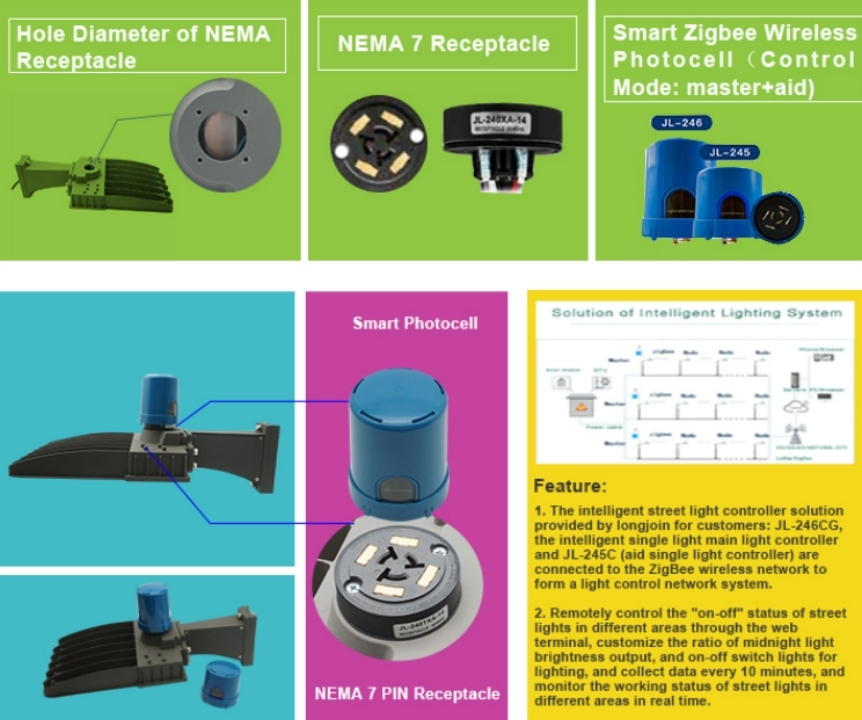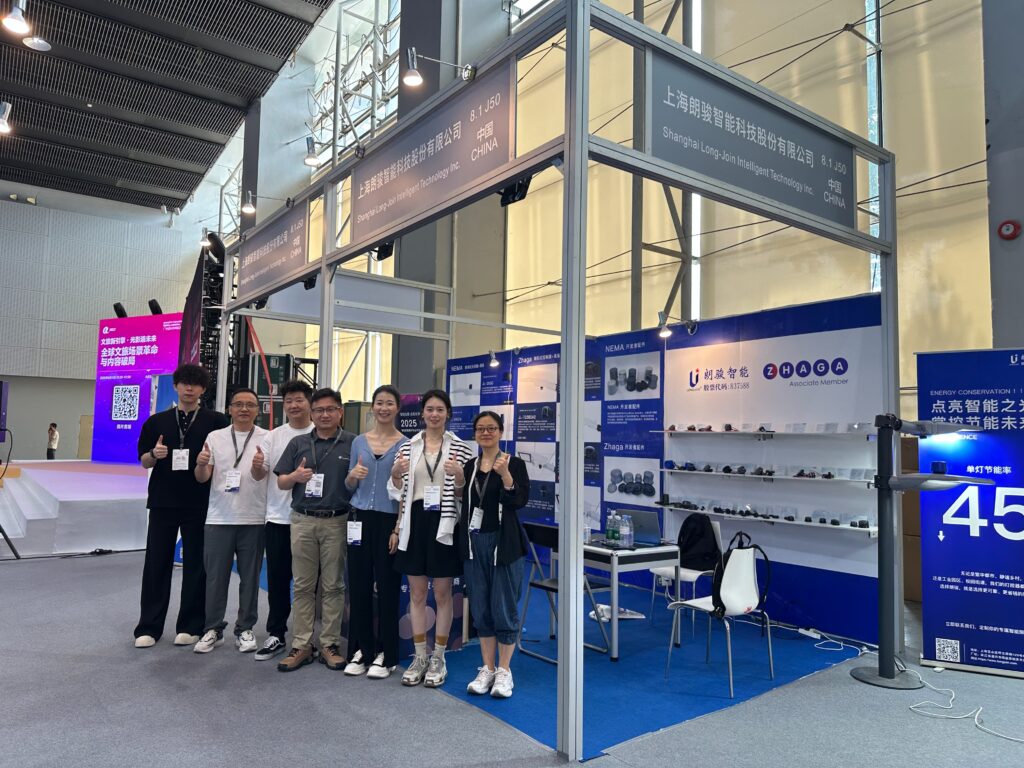- I. Introduction
- II. Macro-Environmental Analysis (PEST)
- III. Long-Join Photocontrol Product Features and Advantages (SWOT Analysis)
- IV. Conclusion and Recommendations
I. Introduction
With the continuous growth of global demand for energy conservation, emission reduction, and intelligent lighting control, photocontrols, as a key component of the lighting control system, have also seen an increase in market demand year by year. Long-Join Intelligent, with its profound expertise in the field of intelligent control, holds a certain share in the photocontrol product market. This report aims to deeply analyze the market status, competitive landscape, user needs, and future development trends of Long-Join’s photocontrol products through PEST and SWOT analysis methods, providing decision-making references for related enterprises and investors.
II. Macro-Environmental Analysis (PEST)
1. Political Environment:
Government Policies: Globally, governments are enacting policies focused on energy conservation and environmental protection, fostering sustainable practices and green consumption. These initiatives create a supportive policy landscape for the adoption and proliferation of photocontrol products.
Regulatory Variability: Concurrently, diverse safety standards and environmental regulations across different countries and regions require Long-Join Intelligent to stay vigilant. The company must monitor regulatory shifts closely, adapting product strategies promptly to navigate potential risks associated with these variations.
2. Economic Environment:
– As the global economy grows and urbanization accelerates, the demand for lighting solutions is on the rise. This expansion creates ample opportunities for photocontrol products in the market.
-Furthermore, as consumer purchasing power increases and expectations for lighting quality heighten, there is a growing need for efficient, reliable, and user-friendly lighting control solutions.
3. Social Environment:
– The growing societal emphasis on energy conservation, emission reduction, and environmental protection is fueling the advancement of intelligent lighting systems. Photocontrols, being a crucial component of these systems, are garnering significant market interest.
– Additionally, as smart city initiatives progress, the deployment of intelligent lighting systems in urban infrastructure and public spaces is becoming more prevalent, thereby expanding the potential applications for photocontrol products.
4.Technical environment:
– The continuous advancement and innovation of technology also offers a continuous improvement at the technological level of the optional control products. The application of new sensors, control algorithms and communication technologies makes light controllers more intelligent, precise and convenient.

-At the same time, transient technologies such as the Enterprise Internet (IOT) and the cloud computing have been promoted to improve their overall value and the competitiveness of the market.
III. Long-Join Photocontrol Product Features and Advantages (SWOT Analysis)

1. Strengths:
– High Protection Level: Long-Join photocontrol products typically have a high protection level (such as IP65), capable of operating stably under various harsh environmental conditions for a long time.
– Wide Voltage Range: The products are suitable for customers using various power sources and have a wide voltage range (such as 120-277VAC), making them convenient for users in different power environments.
– Fast Response and Delay Function: Photocontrols can quickly respond to changes in light conditions and make corresponding adjustments. Additionally, some models have a delay function to prevent misoperation caused by spotlights or lightning at night.
– Surge Protection: High-end models feature surge protection, which effectively shields lighting equipment from potential damage caused by electrical grid fluctuations or lightning strikes.
– Energy Conservation and Environmental Protection: Long-Join photocontrol products play a crucial role in promoting energy efficiency and environmental sustainability. By intelligently regulating the brightness and operational states of lighting systems, these products significantly curtail energy usage and reduce carbon footprints, resonating with the global shift towards eco-friendly, low-carbon living practices.
2.Weaknesses:
– Higher Price Point: Photocontrols typically command a higher price compared to conventional lighting control solutions, potentially restricting their accessibility in price-sensitive market segments.
– Rapid Technological Evolution:The fast-paced nature of technological advancements and shifting consumer preferences demand constant innovation from Long-Join Intelligent. While this fosters industry progress, it also results in shorter product lifespans and intensifies competitive pressures within the market.
3. Opportunities:
– Smart City Construction: As smart city initiatives deepen, intelligent lighting systems are poised for expansive growth, given their integral role in urban development. Long-Join Intelligent can capitalize on this trend by proactively expanding its market presence and reinforcing brand influence.
– Emerging Market Expansion: As the global economy develops and emerging markets rise, Long-Join Intelligent can actively explore overseas markets to find new growth points.
– Support from Energy Conservation Policies: Governments worldwide are issuing energy-saving and environmental protection policies encouraging green consumption and sustainable development. As a typical representative of energy conservation, Long-Join’s photocontrol products will benefit from policy support and promotion.
4. Threats:
– Intensified Market Competition: Currently, the photocontrol market is highly competitive with numerous domestic and international enterprises entering the field. Long-Join Intelligent needs to face challenges and pressures from both domestic and foreign competitors.
– Changes in Regulations and Policies: Different countries and regions have differing safety standards and environmental protection requirements for lighting products, with regulations possibly changing anytime. This requires Long-Join Intelligent to closely monitor changes in relevant regulations and policies and adjust product strategies in a timely manner to mitigate potential risks.
– Risk of Technological Substitution: With continuous technological advancements and innovations, new technologies or products might replace existing photocontrol products. This requires Long-Join Intelligent to maintain keen market insight and technological innovation capability to address potential risks of technological substitution.
IV. Conclusion and Recommendations
In conclusion, through PEST and SWOT analysis methods, it is evident that Long-Join Intelligent’s photocontrol products possess certain competitive advantages and development potential but also face several challenges and threats. To achieve better results in the future market, Long-Join Intelligent should continue to increase research and development efforts to promote technological innovation and product upgrades; simultaneously strengthen marketing and brand building to enhance brand awareness and reputation; additionally, it should closely monitor industry dynamics and regulatory policy changes, promptly adjusting product strategies to mitigate potential risks. By implementing the above measures, Long-Join Intelligent is expected to maintain a leading position in the photocontrol market and achieve sustainable development.






